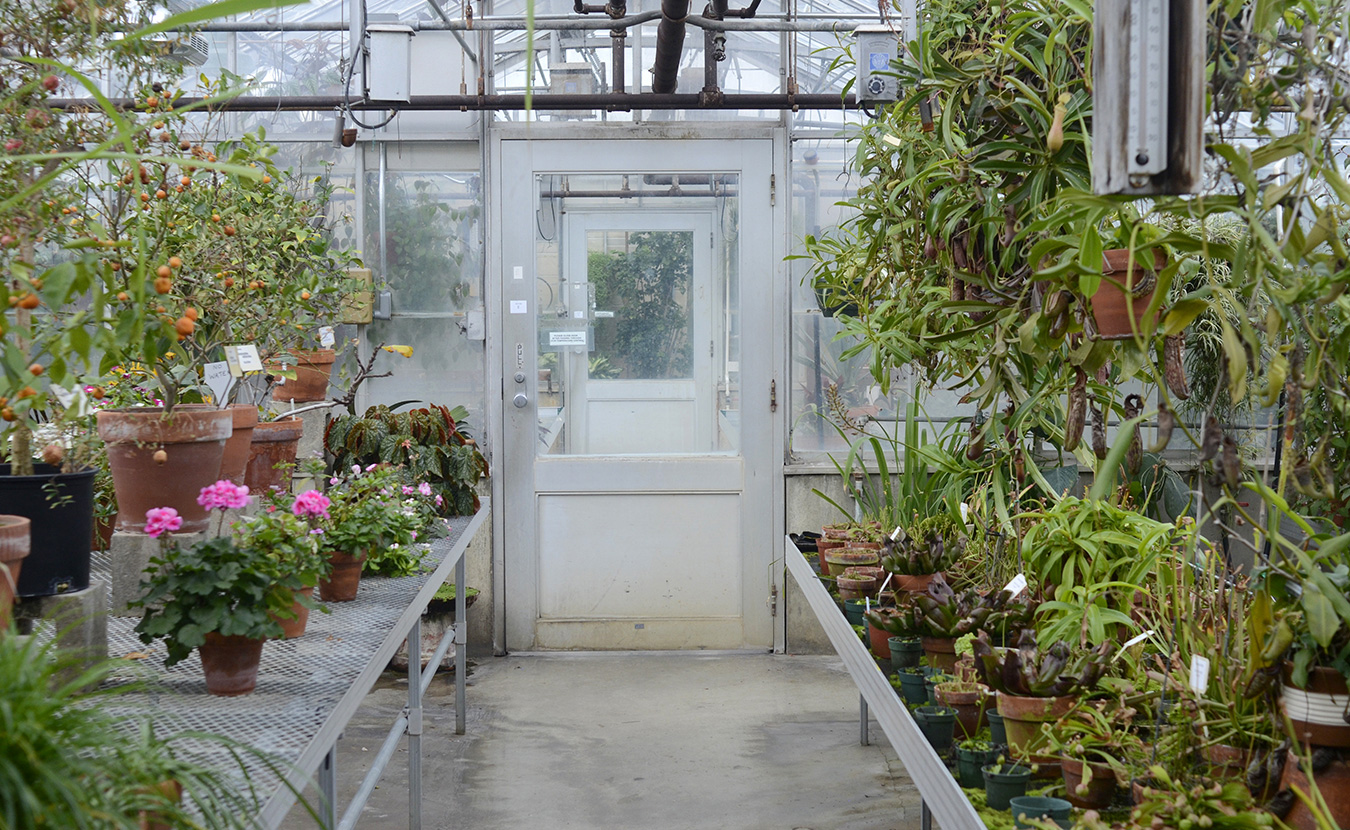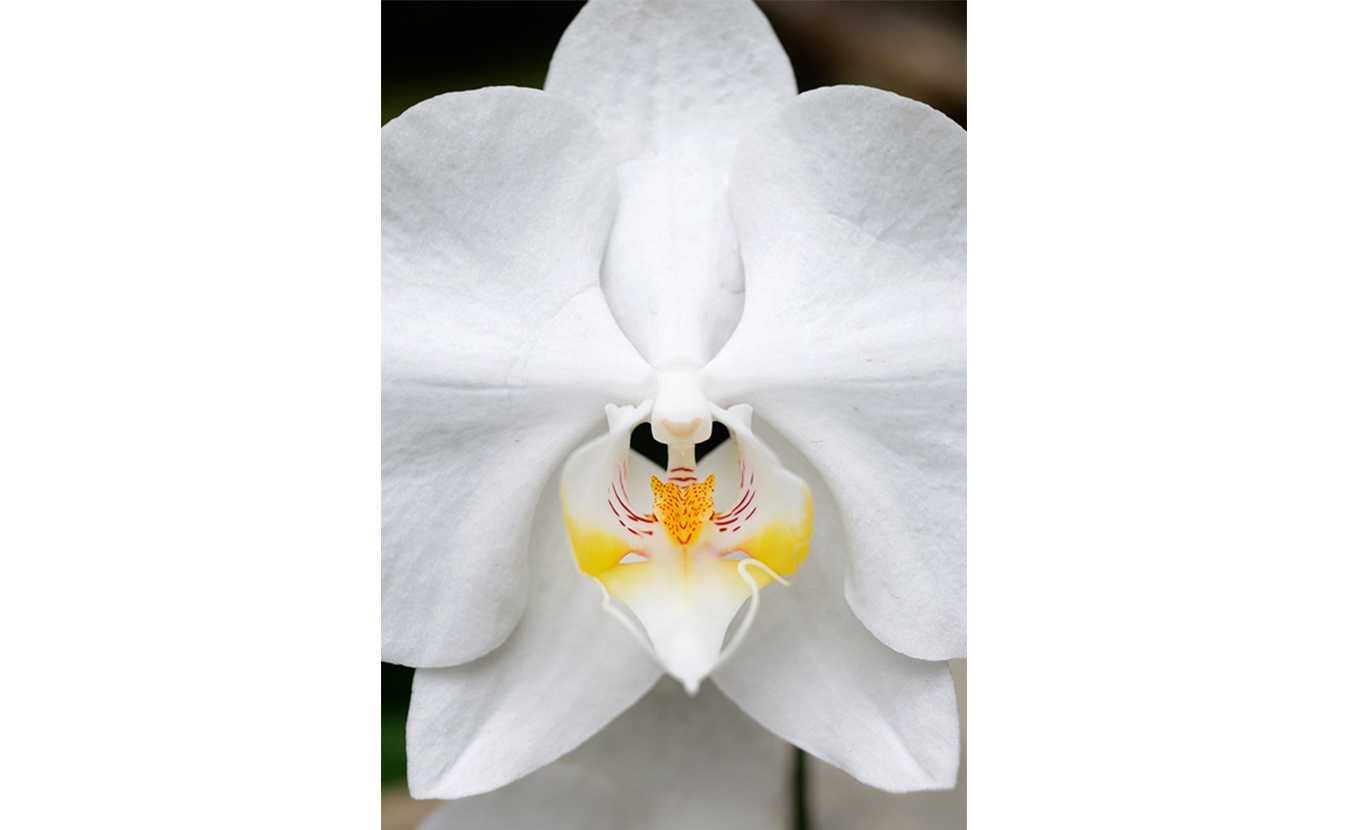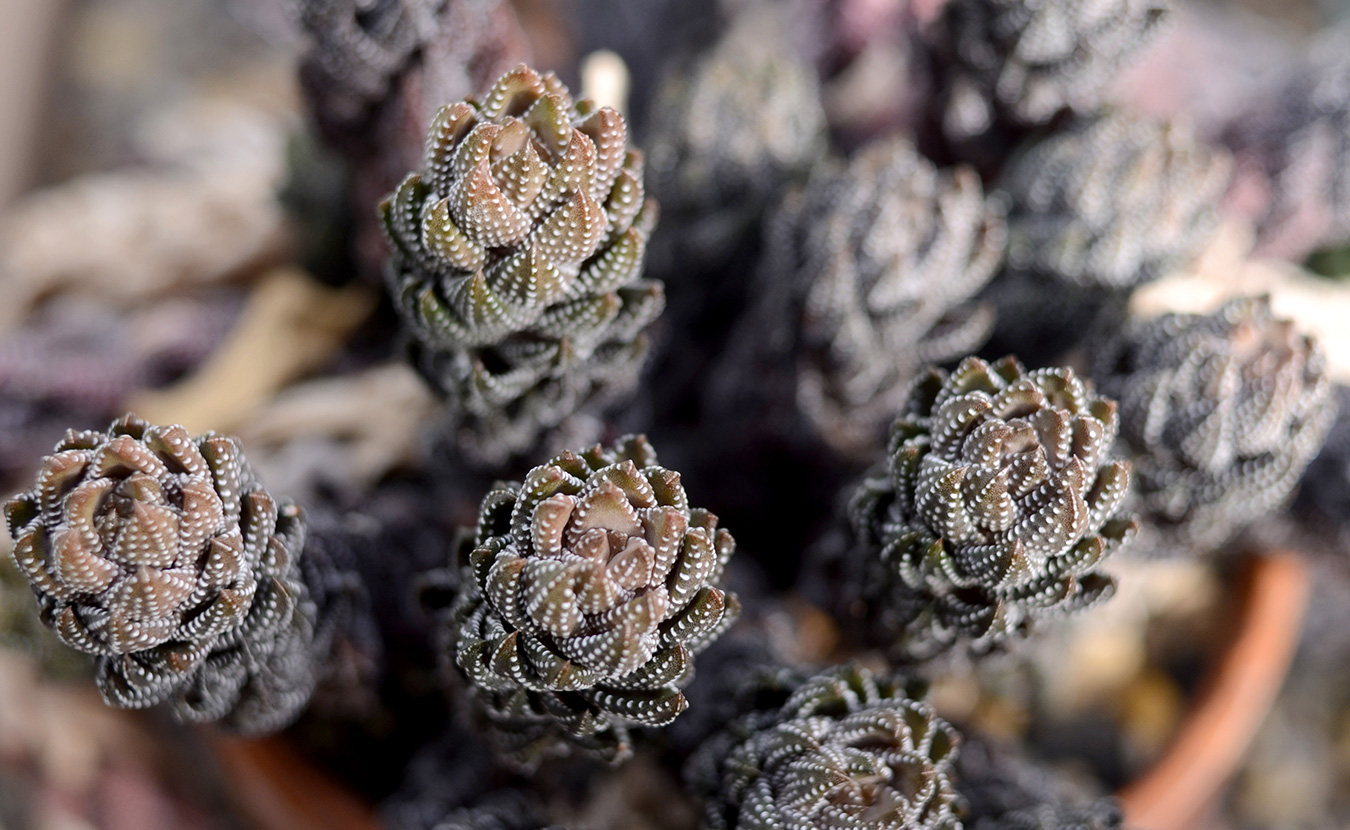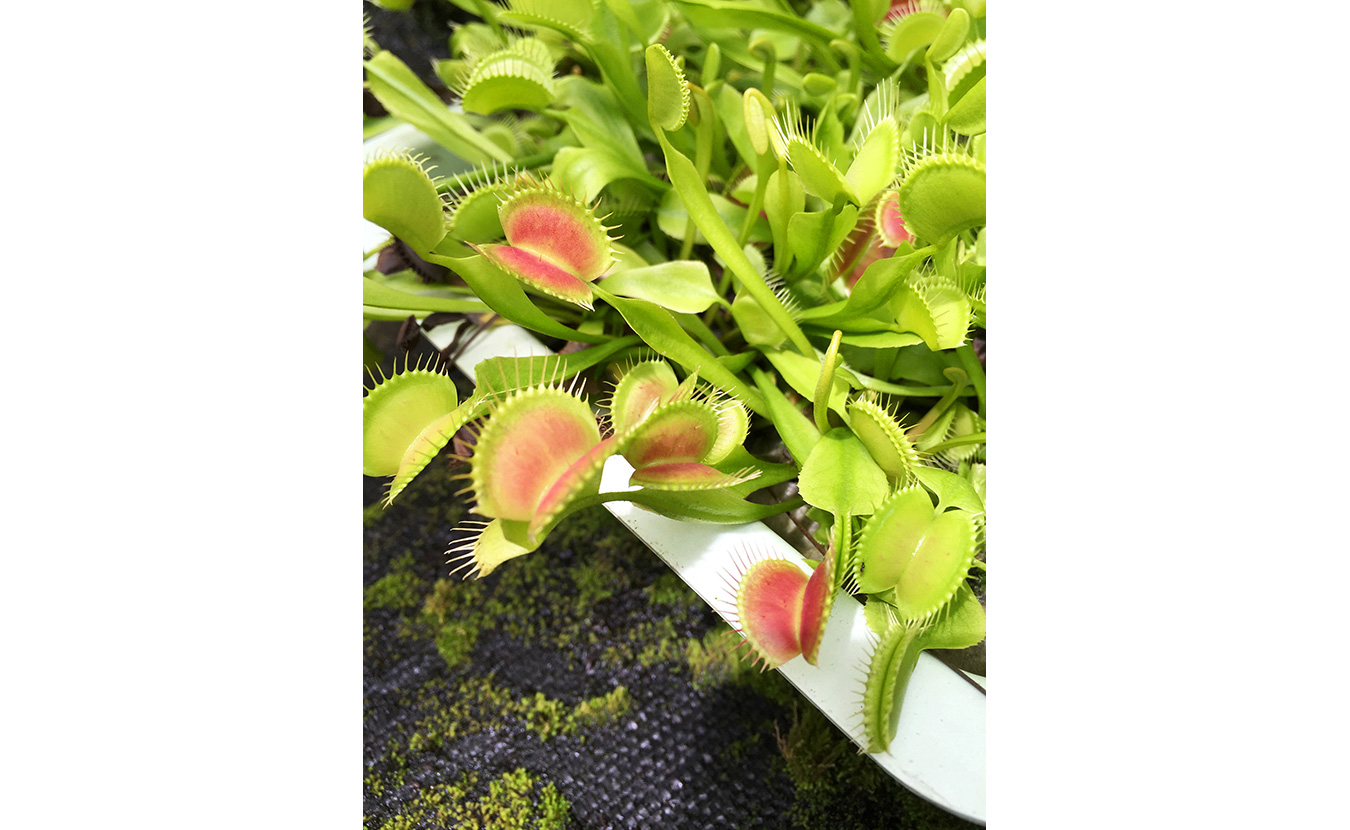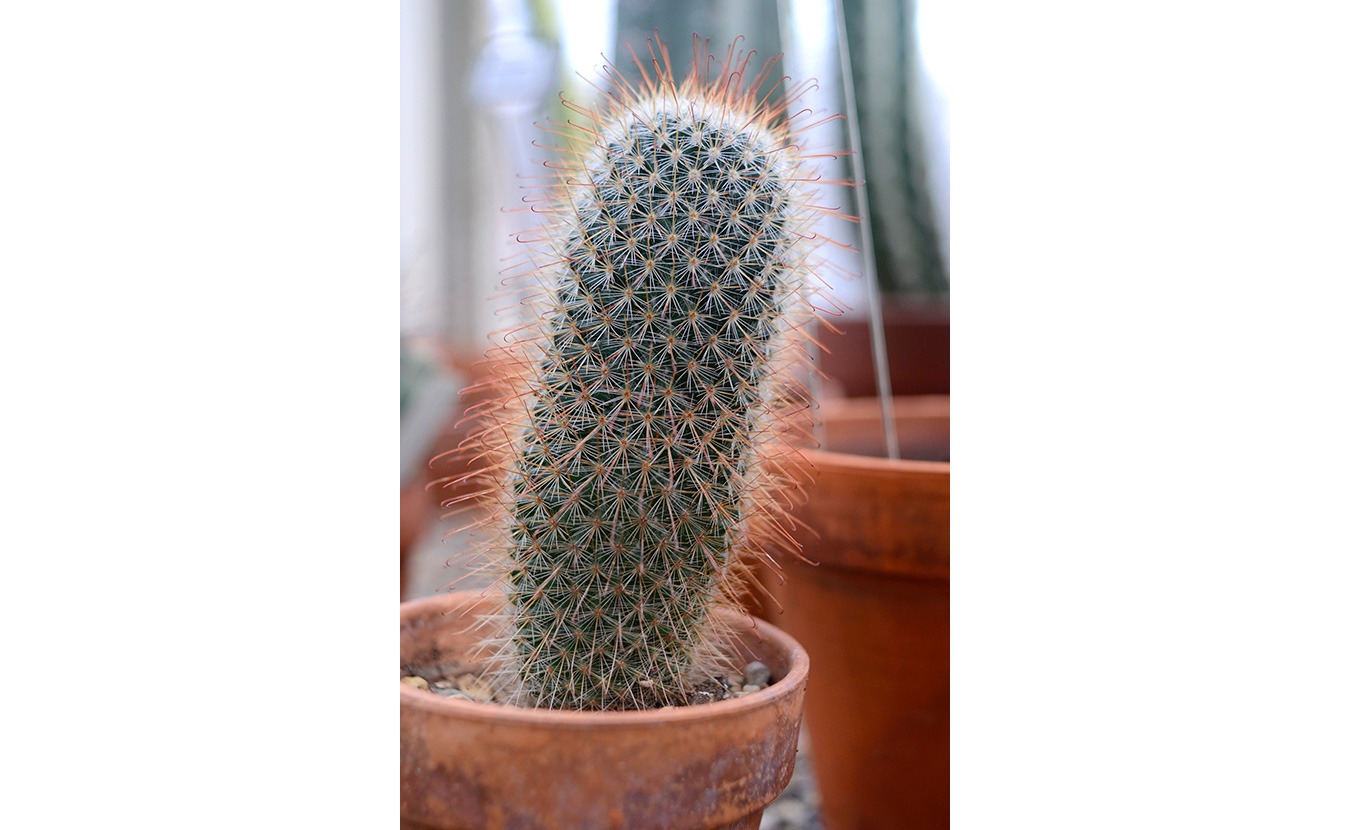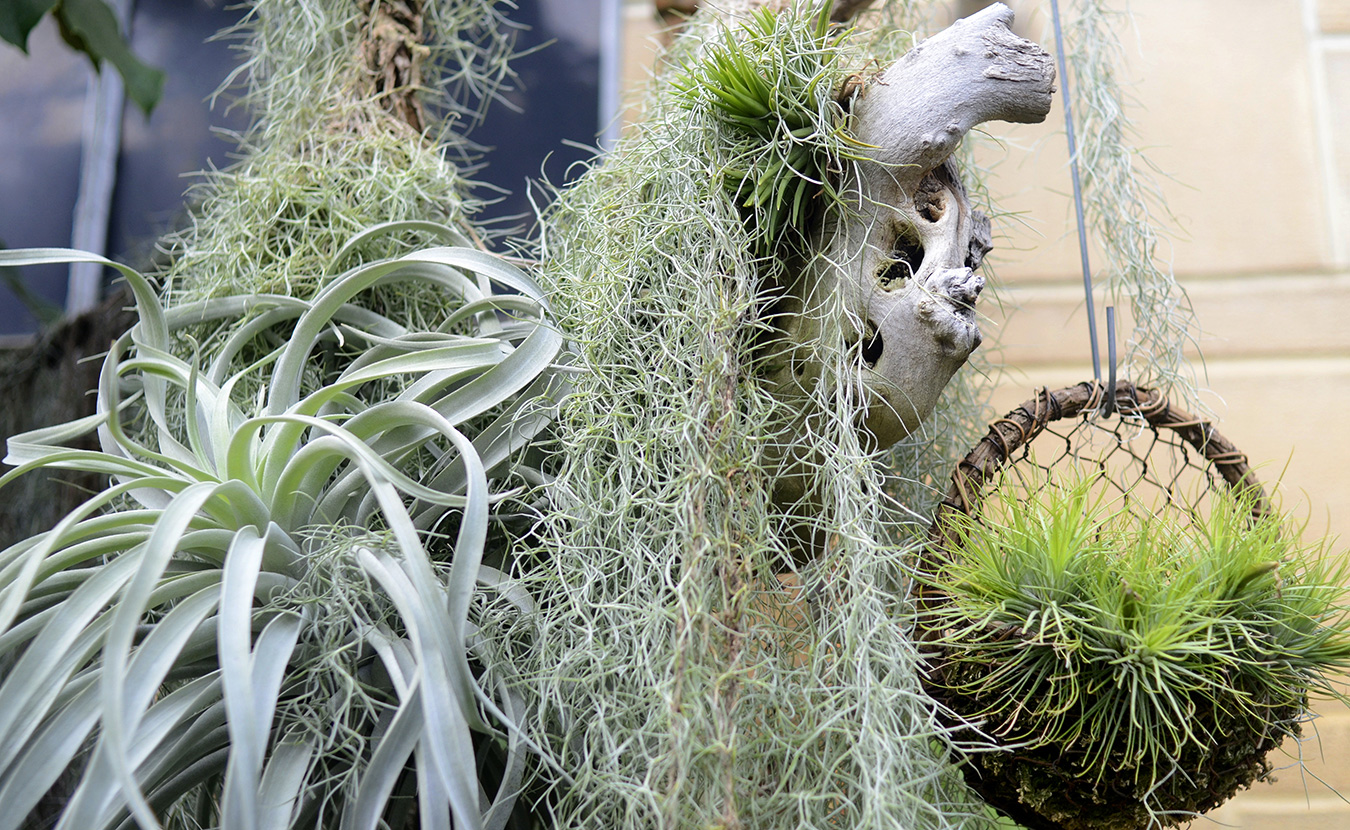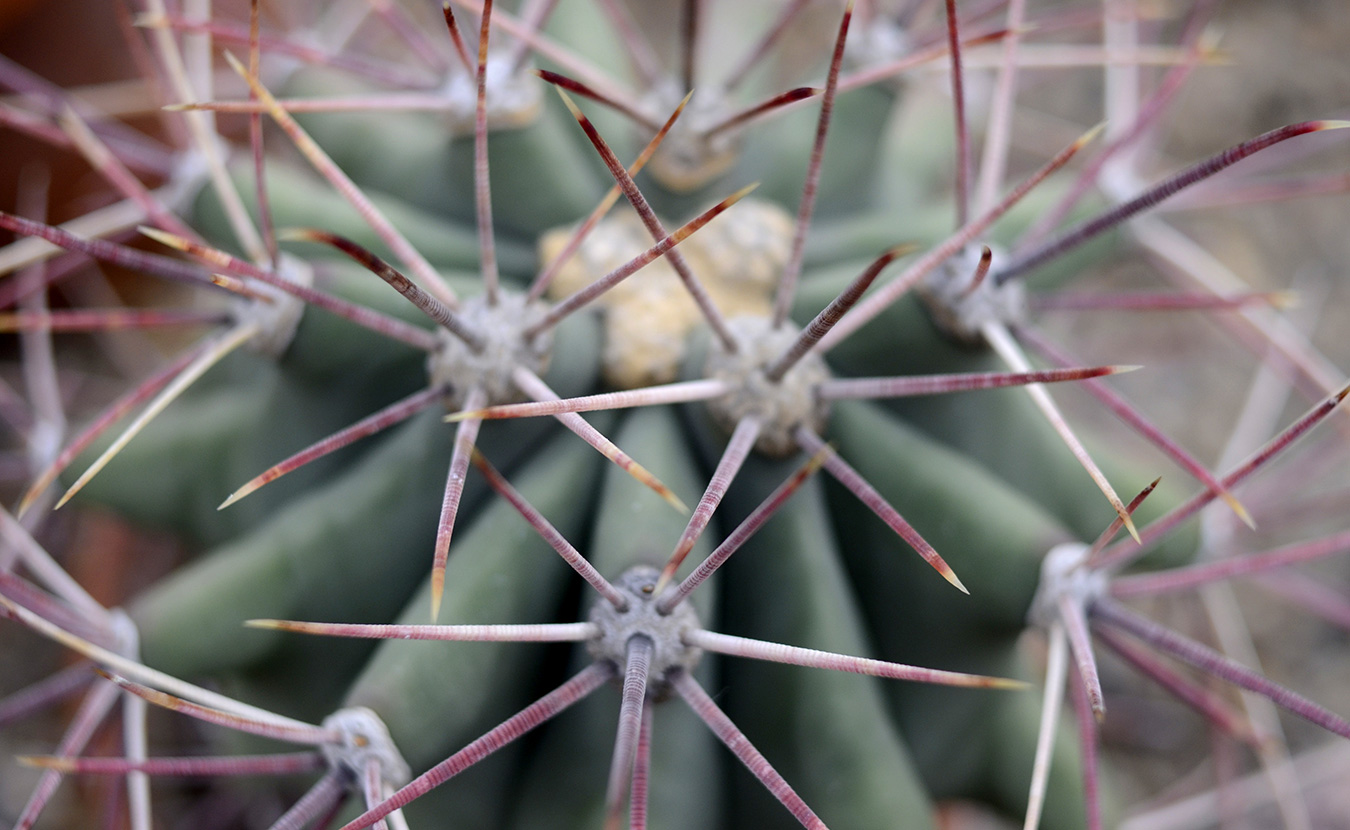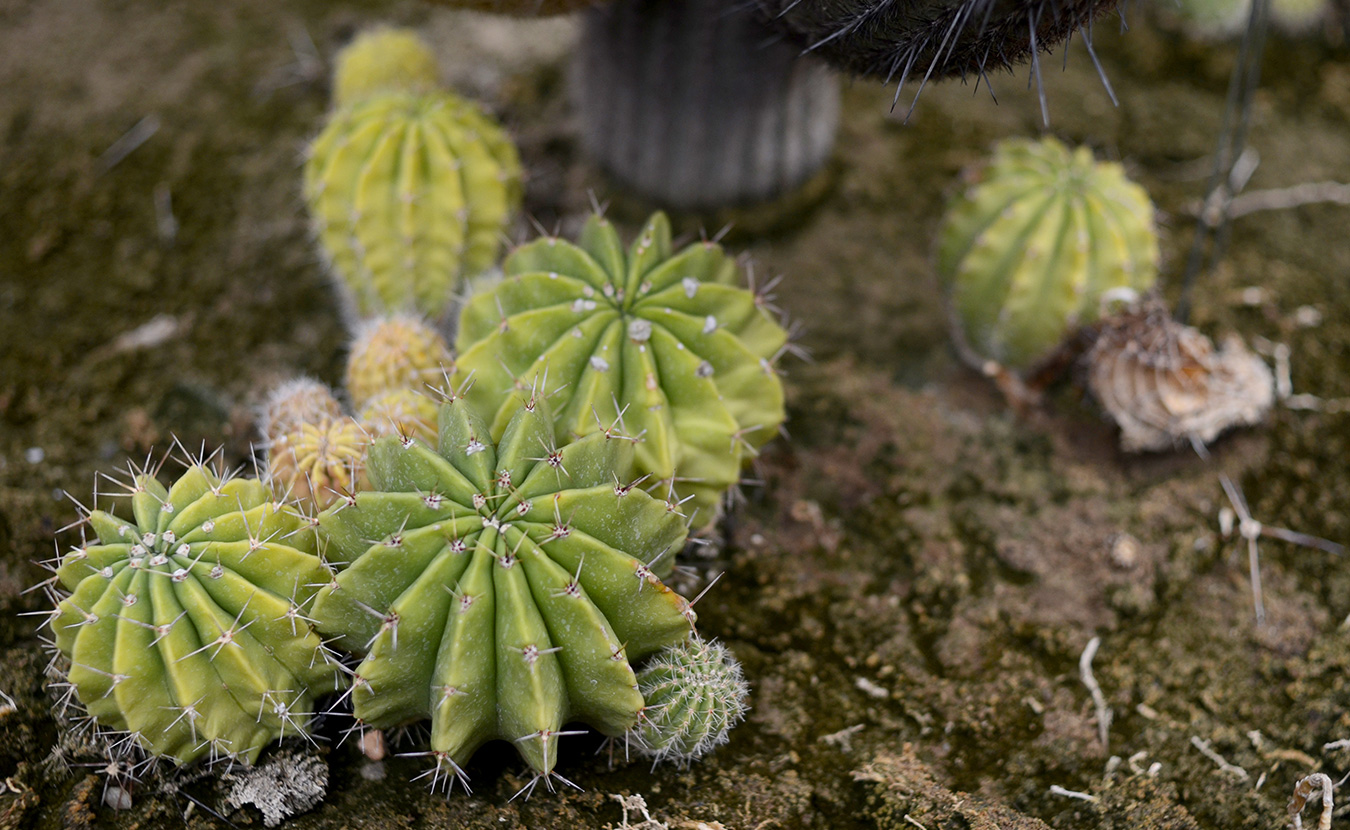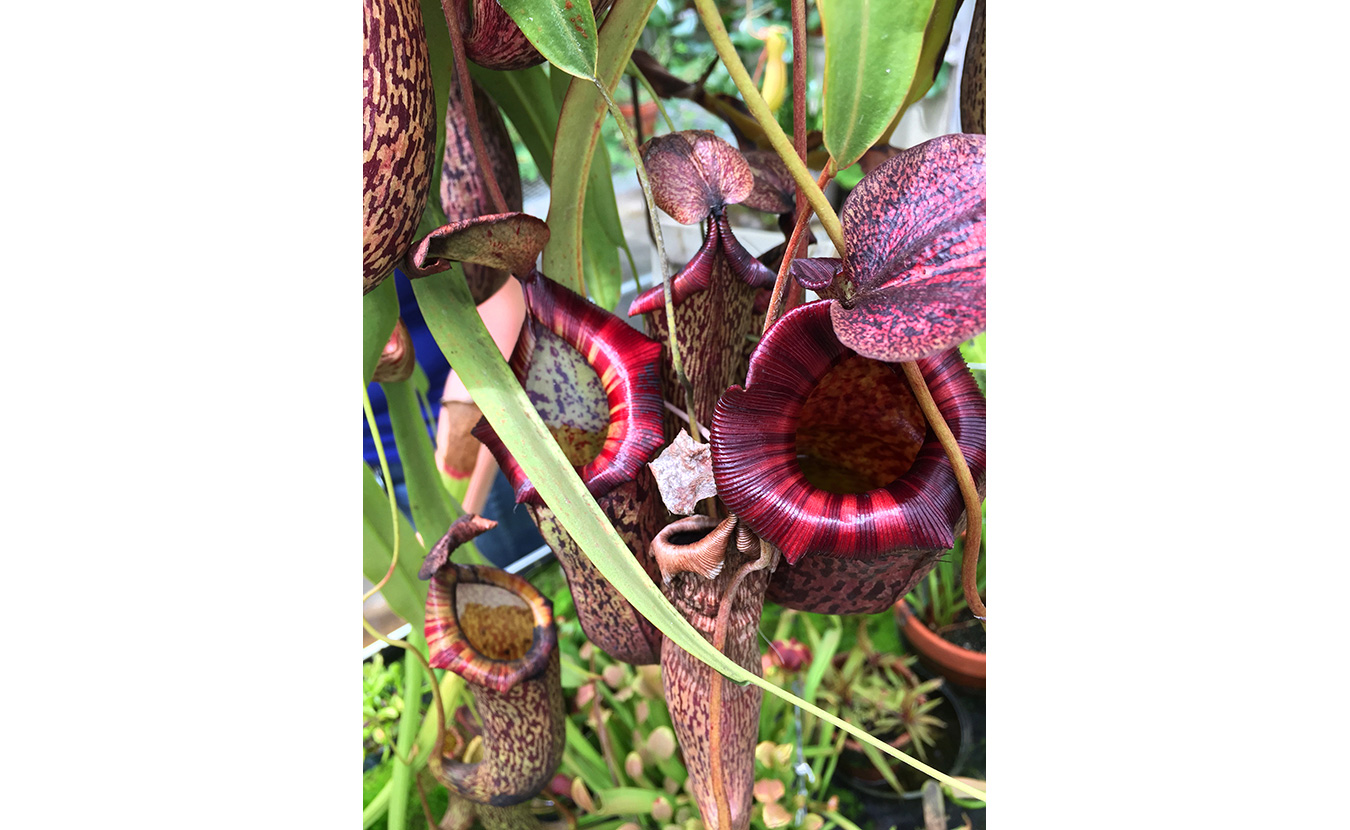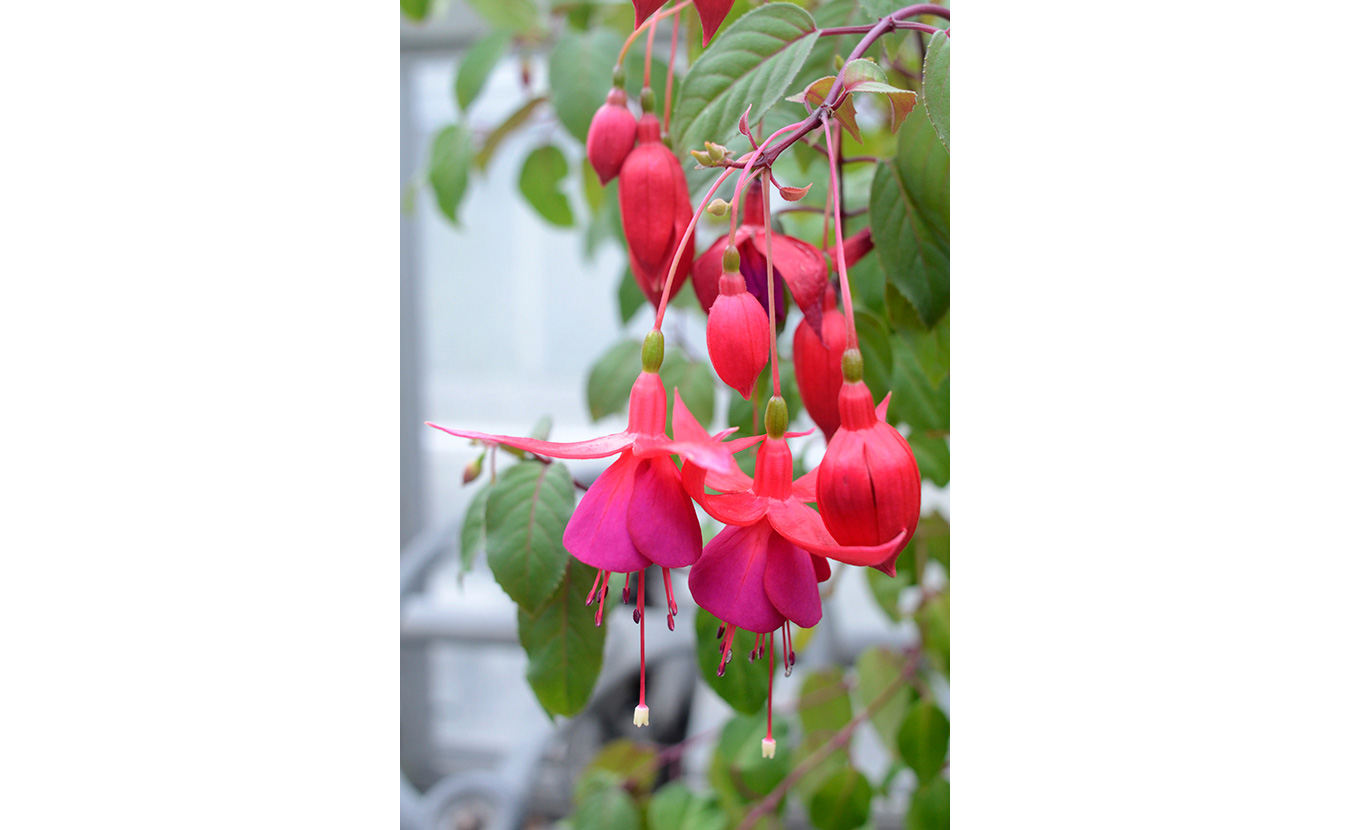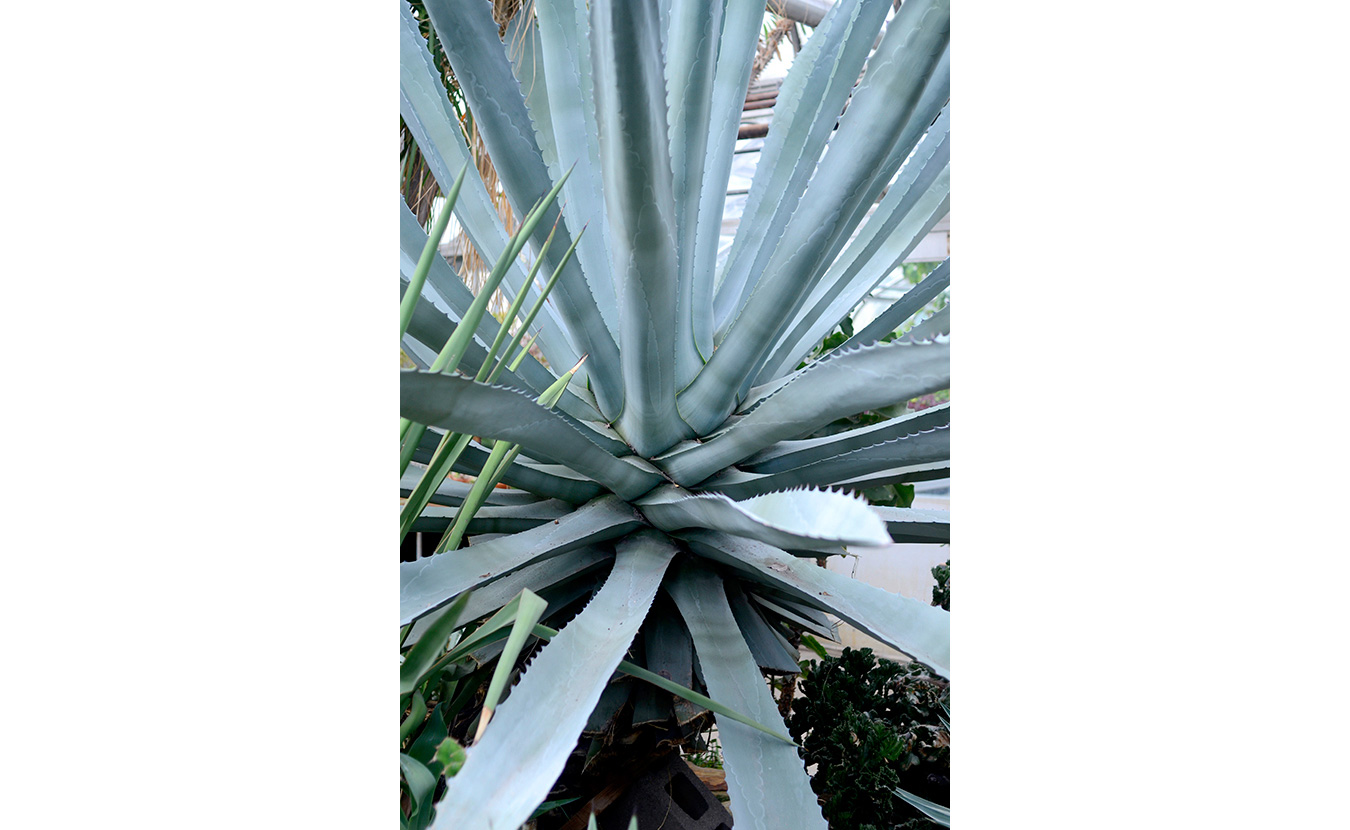The greenhouses adjoining Indiana University’s Jordan Hall on East 3rd Street are a familiar sight to Bloomington residents, the windows steamy from condensation when it’s cold out or glowing with warm light in the evening. While the collections housed inside are primarily used for teaching purposes in the IU Department of Biology, the greenhouses themselves are a perfect destination for plant lovers, artists, and anyone looking for a peaceful place to while away an hour or two.
On a bright, chilly February morning, I met up with Greenhouse Supervisor John Lemon, who has worked in Jordan Hall since 1972. “I started at the bottom of the totem pole and learned what I needed to know on the job,” Lemon told me. “I was 20 years old when I came here — now I’m the old guy.” With more than 40 years on the job, Lemon knows just about everything there is to know about the greenhouses. As we made our way through each room, it was clear that he enjoys sharing that knowledge with visitors. I learned a lot on my tour, including some things you may not know about them.
1) The Jordan Greenhouses are built on the former site of a limestone quarry.
Jordan Hall and the attached greenhouses opened in 1955, the result of a need to bring the departments of bacteriology, botany, and zoology together into one building. At the beginning of the 20th century, the land was a limestone quarry, but within a few decades it had been converted into a scenic green space known as the Sunken Garden. IU students had another name for the area, which was apparently a popular spot for amorous couples — “the Passion Pit.” (Click here to see IU Archives photos of the Sunken Garden.)

John Lemon, the greenhouse supervisor, checks one of the many plants at the Jordan Greenhouses while on his rounds.
2) The greenhouses on 3rd Street are only part of the entire system.
In addition to the public greenhouses on 3rd Street, there are greenhouses for research on the rooftops of Jordan Hall and at Hilltop Garden & Nature Center off of East 10th Street. Lemon and his staff of three full-time gardeners are caretakers of all three locations — watering the plants twice a day, checking pots, pruning trees, and replanting when necessary — and they make the rounds every day of the year, even holidays.

The greenhouses allow for plants, such as cotton, to flourish during weather they otherwise wouldn’t be able to grow in.
3) It’s a great place to visit when it’s cold outside.
Greenhouses have to be kept warm to cultivate plant life year-round — Lemon says the public greenhouses average about 70 to 75°F. On the day I visited, the outside temperature was in the single digits, but I was able to walk around comfortably with no coat. Between the colorful blooms, tropical plants, and cacti on display, I could imagine I’d left the chill behind and traveled to my warm, happy place far away from the reality of Indiana winter. During the tour, we came upon a young man sitting cross-legged on the floor, his coat and sweater in a pile next to him — I’m guessing he felt the same way.
4) Artists are welcome.
With so many beautiful and exotic plants on display, the Jordan Greenhouse is a popular spot with artists. Students from the IU Henry Radford Hope School of Fine Arts visit for class assignments, and artists from the community set up easels or situate themselves and their sketchbooks in an advantageous spot. Lemon advises artists to call ahead to determine a good time to stop in; he can recommend a time that won’t conflict with watering, maintenance, or any scheduled tours. And whether you’re shooting photos suitable for framing or just populating your Instagram feed, you’ll find plenty of perfect shots here.
5) You’ll leave knowing more than you did when you arrived.
During the course of my tour, Lemon shared all sorts of interesting facts about the species found in the greenhouse. In the desert house, for example, he nicked a plant with a knife to demonstrate the difference between African desert plants and cacti from the Western Hemisphere: When cut, African plants secrete latex, which looks like a milky-white substance; cacti contain a clear, gluey fluid. The plants, which have a similar appearance, are displayed together to show that plants that evolve in similar climates tend to look alike, even though they aren’t related. In another room, Lemon pointed out a fruit known as a monkey dinner bell, explaining that when the fruit ripens, it makes a loud noise as it explodes; when the monkeys hear the noise, they gather the seeds and eat them.
6) It’s free!
Whether you’re spending a couple hours or just passing through, the Jordan greenhouses are free and open to the public seven days a week, except holidays. “People do often drift in, mostly college students,” Lemon says, noting that the greenhouses are also a popular spot for school tours. “Kids like the sensitive plants, ones that close up when you get close to them,” he explains. Group tours are available as well — small groups are best, but larger groups can be taken through in shifts to avoid crowding. The biggest challenge to visiting the greenhouses may be parking, which is no surprise to anyone who spends time on IU’s campus. Expect to walk a few blocks if you find neighborhood or garage parking. Or, better yet, take the bus — it will drop you off at the greenhouse door.
Jordan Hall Greenhouses
1001 E. 3rd Street
Mon through Fri 7:30 a.m. to 3:45 p.m.
Sat and Sun 9 a.m. to 3 p.m.
Group tours available by appointment
812-855-7717
Email: [email protected]

